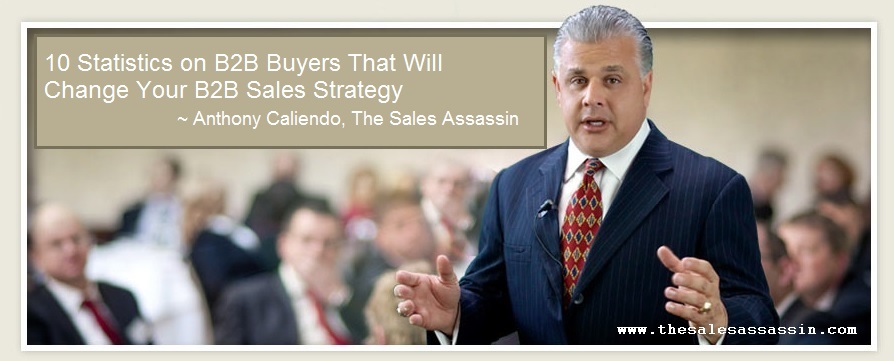
If you’re a B2B seller – or really if you’re in any type of sales – its vital to your sales success to understand your customer’s buying and decision process. If you don’t understand how your buyer gets information and makes decisions, you’re just spinning your wheels. You need facts and statistics to improve your sales game and get more sales. Here are 10 facts on the business-to-business buying process that should change your B2B sales plan.
10 Statistics on B2B Buyers That Will Change Your B2B Sales Strategy
1. Only 47% of information used during a customer’s purchase decision comes from the supplier (LiveHive)
If you’re not providing your buyer’s information, where are they getting it? Your buyer is probably online googling for information and consulting colleagues for recommendations. Use social media to get your message online.
2. 57% of the buyer’s journey is completed before the buyer talks to sales (Corporate Executive Board)
If your buyer has already made up their mind before they ever talk to you, you need to change your sales strategy so they’re getting your information earlier. Who is your buyer talking to before they talk to you? Are they talking to your other customers? Are they searching for information online? Are they asking colleagues?
3. On average decision makers consume 5 pieces of content before being ready to speak to a sales rep (CMOCouncil)
Your potential customer’s decision makers are doing they’re homework: before they contact you. The sales message you’re sending out – emails, ads, social media, newsletters – all make a lasting impact on your audience’s decision whether or not to speak to you.
4. Your buyer gets 100+ emails a day, opens just 23% and clicks on just 2% of them (Tellwise)
Email subject lines matter: consumers make the decision in a split second whether or not to open your email: and more likely, they decide not to open your emails. Invest time, training and resources to develop email subject lines that attract attention in a good way -make them memorable, not deceptive. Even if your buyer doesn’t open your email, a well-written subject line can send a strong message that they will remember.
(ReachForce)
You only have so many hours per day, per week and per month to reach out to potential customers. Social media is an effective tool to reach potential customers. Use your time wisely, and find out which social channels your target audience is using, then go there.
6. 86% of B2B buyers access business-related content on mobile devices (Genwi)
If your website is not responsive – it its not easily read on smart phones or tablets – the chances are high that your buyer won’t spend time on your website. Invest in a website that makes it easy for your buyers to read your message: isn’t that why you have a website?
Know where your buyers are. If your buyers are on Twitter, that’s were you need to be. If your buyers are in the C-Suite, statistically they’re more likely to be on LinkedIn. Invest your time and resources in marketing to your customers are, not where you are.
8. 75% of buyers want marketers to curb the sales-speak in their content (DemandGen Report)
Don’t force your audience to speak your jargon – speak theirs.
9. 84% of B2B decision makers begin their buying process with a referral (SalesBenchmarkIndex)
Referrals from colleagues, industry leaders, and subject authorities are the starting point for many buyers. Up your referral game: when you have a satisfied customer, thank them for their business ask if they know anyone who would be interested in your product. Many satisfied customers are happy to give a referral – but need to be asked!
10. More than 5 people are now involved in the average B2B buying process (LinkedIn)
Your sales message has more than one audience. Develop your sales tools to speak to different audiences, who rely on different types of information and resources to make their decision. A well-designed sales strategy doesn’t put all their efforts on a single activity, or a single voice. Research who your buyer’s decision makers are, and design sales messages to address their differing needs.
Facts and statistics are more than just interesting to read – sales facts and figures are an important tool you can use to customize your sales delivery to your audience.
~ Anthony Caliendo, The Sales Assassin











